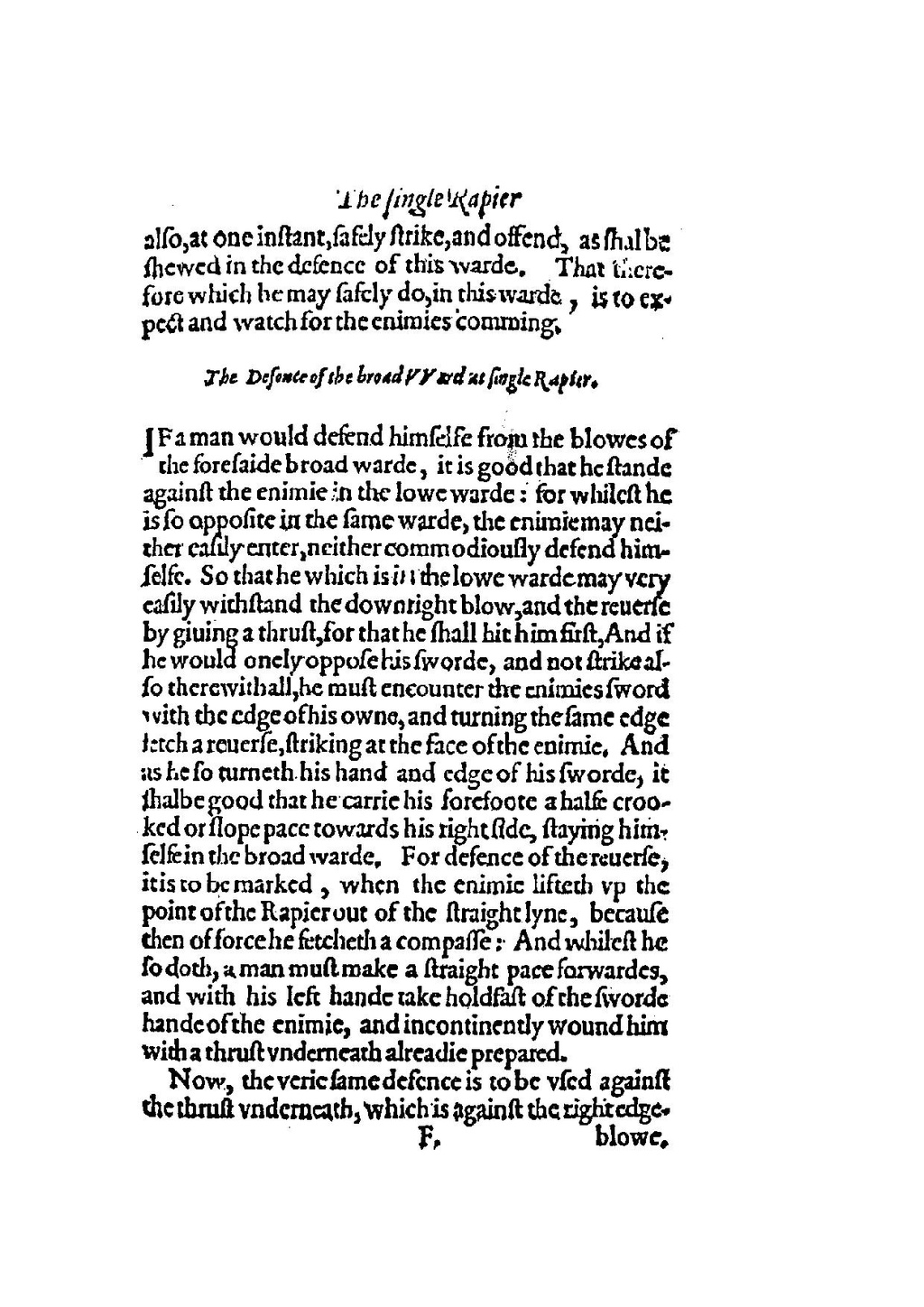also, at one instant, safely strike, and offend, as shal be shewed in the defence of this warde. That therefore which he may safely do, in this warde, is to expect and watch for the enimies comming.
The Defence of the broad VVard at single Rapier.
IF a man would defend himselfe from the blowes of the foresaide broad warde, it is good that he stande against the enimie in the lowe warde: for whilest he is so opposite in the same warde, the enimie may neither easily enter, neither commodiously defend himselfe. So that he which is in the lowe warde may very easily withstand the downright blow, and the reuerse by giuing a thrust, for that he shall hit him first, And if he would onely oppose his sworde, and not strike also therewithall, he must encounter the enimies sword with the edge of his owne, and turning the same edge fetch a reuerse, striking at the face of the enimie. And as he so turneth his hand and edge of his sworde, it shalbe good that he carrie his forefoote a halfe crooked or slope pace towards his right side, staying himselfe in the broad warde. For defence of the reuerse, it is to be marked, when the enimie lifteth vp the point of the Rapier out of the straight lyne, because then of force he fetcheth a compasse: And whilest he so doth, a man must make a straight pace forwardes, and with his left hande take holdfast of the sworde hande of the enimie, and incontinently wound him with a thrust vnderneath alreadie prepared.
Now, the verie same defence is to be vsed against the thrust vnderneath, which is against the right edge-
blowe.

